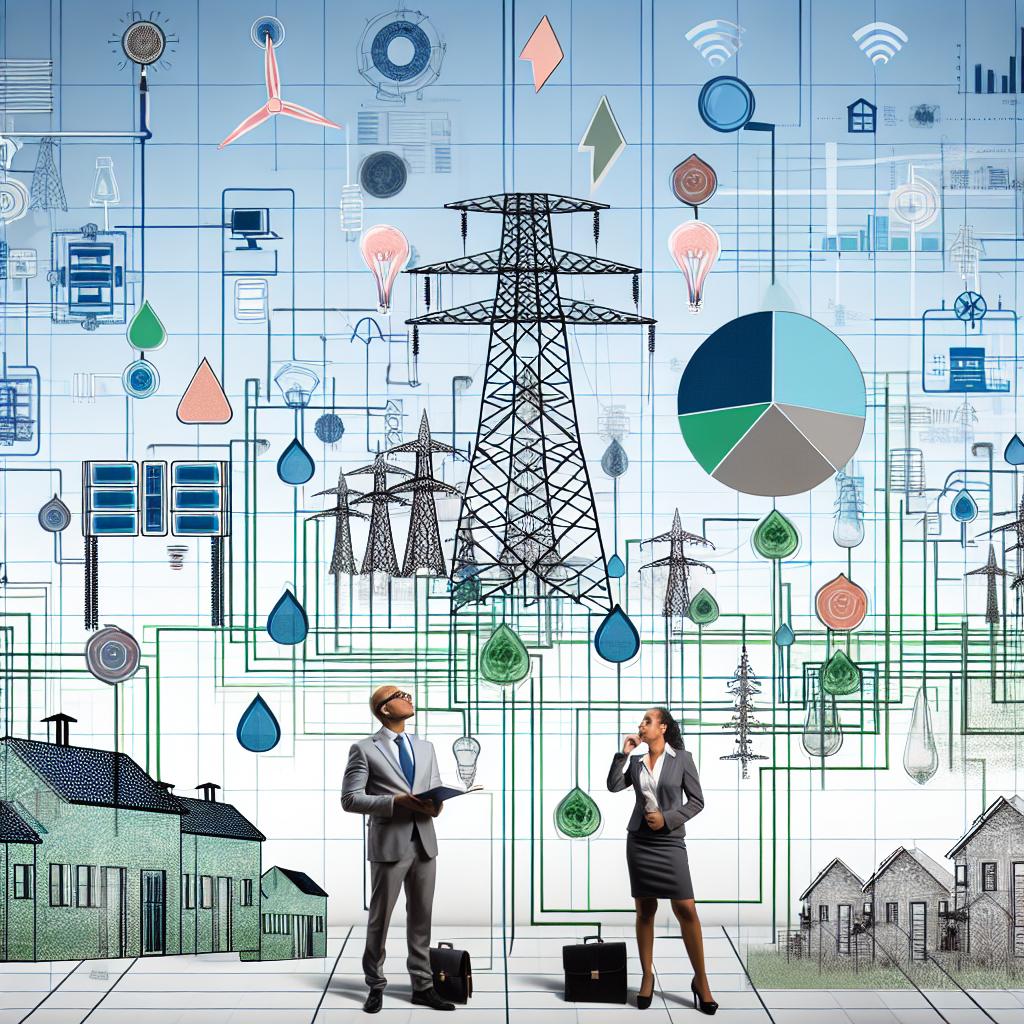
The Role of Smart Grids in Energy Efficiency
Smart grids are transforming the landscape of electricity management and distribution, providing a pathway to enhanced energy efficiency. They leverage cutting-edge technologies and communication frameworks to improve the reliability, security, and efficiency of energy distribution systems.
Understanding Smart Grids
At the heart of the smart grid model is the integration of advanced digital technologies and bi-directional communication networks that revolutionize the way electricity is produced and distributed. Unlike traditional power grids, which traditionally feature a unidirectional electricity flow from centralized power plants to end consumers, smart grids facilitate interactive, real-time exchanges among all stakeholders involved. This capability allows utilities to swiftly detect faults, efficiently manage electricity loads, and seamlessly incorporate renewable energy resources into the grid.
Components of Smart Grids
The essential components that make up smart grids include sensors, smart meters, advanced communication pathways, and sophisticated data management systems. Smart meters play a crucial role by enabling consumers to access real-time details about their energy consumption. The data generated from these devices empower individuals to optimize their energy usage patterns. Additionally, the deployment of sensors across the grid enables the detection of anomalies, which are then reported back to utility providers. This capability accelerates response times to outages or technical issues.
Enhancing Energy Efficiency
Smart grids hold significant promise in boosting energy efficiency across multiple facets. By enabling real-time monitoring and dynamic electricity management, smart grids contribute to reduced energy waste, decreased peak demand, and lower operational costs for utility companies. These efficiencies culminate in decreased carbon emissions, aligning with environmental sustainability goals.
Demand Response Programs
A notable advantage of smart grids is their support for demand response programs. These programs incentivize consumers to modulate or shift their electricity usage during peak demand periods. By reducing the grid’s load during these critical times, such programs enhance grid stability and obviate the need for additional power generation capacity. For a deeper exploration of demand response techniques, a resource is available here.
Integration of Renewable Energy
Smart grids significantly expand the capacity for integrating renewable energy sources, such as solar and wind power. They offer a platform for effectively balancing power supply and demand, even accommodating the variable nature of renewables. For further information on renewable energy integration, additional insights can be found here. By interconnecting a broad range of energy sources, smart grids ensure a reliable electricity supply and reduce dependence on fossil fuels.
Challenges and Future Prospects
The transition to smart grids is not without its challenges, despite their numerous benefits. One of the most significant hurdles is the substantial initial investment required for deployment. Furthermore, smart grids are potentially vulnerable to cybersecurity threats, given their reliance on digital and communication technologies. Regulatory reform is also necessary to accommodate the changes brought about by smart grid technologies.
However, technological advancements are progressively addressing these issues, painting a bright future for smart grids. Continued focus on research and development is vital, as is the collaboration between governments, utility companies, and technology providers. By tackling these challenges, smart grids are expected to play a central role in achieving global energy efficiency objectives and ensuring a sustainable energy future.
Understanding the evolution and structure of smart grids is crucial in assessing their potential to change how energy is managed on a global scale. These systems represent a fundamental shift from traditional methods, offering a dynamic and integrated approach to energy flow that is critical in today’s context of increasing energy use and environmental concerns.
In conclusion, the development and expansion of smart grids represent a significant leap forward in the pursuit of energy efficiency. By utilizing advanced technologies to improve the management of electricity supply and demand, they offer a robust framework for enhancing the sustainability and reliability of energy systems worldwide. The promise of integrating renewable energy sources into these grids further amplifies their impact, advocating for a future where energy needs can be met without compromising environmental integrity. However, realizing this potential requires overcoming existing challenges through innovation, investment, and cooperation among all stakeholders involved in energy production and distribution.